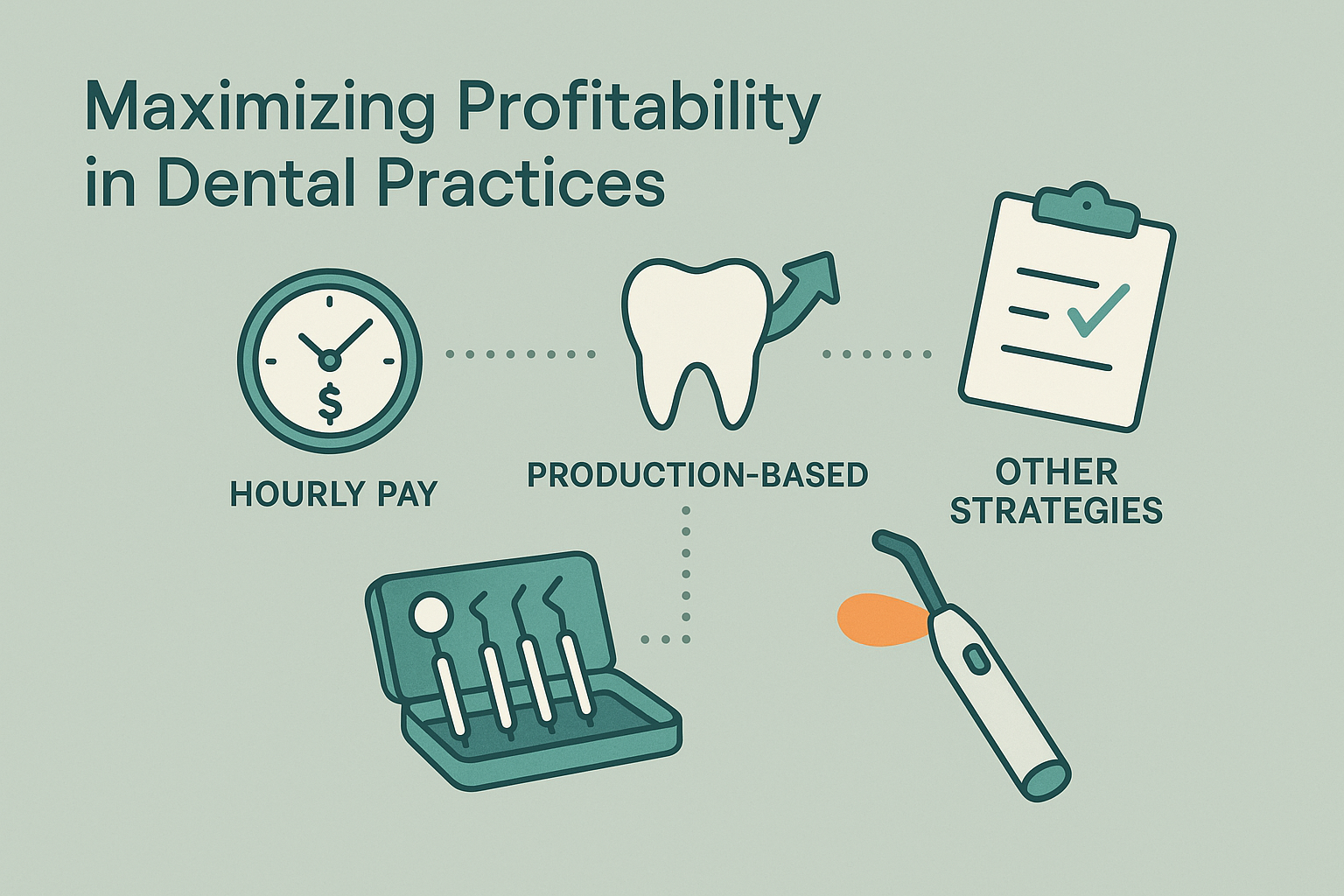Maximizing Profitability: Effective Compensation Strategies for Hygienists and Associates
In the competitive landscape of Canadian dental care — particularly in the Greater Toronto Area — effective compensation strategies for dental hygienists and associates are becoming a core part of issues affecting clinic sustainability and staff retention. Balancing clinical productivity with fair pay models is essential not only for profitability, but also for cultivating a motivated and efficient dental team. Developing structured, goal-driven compensation programs that reflect modern clinical realities and labor market values is critical for Toronto-based clinic owners seeking long-term success.
The Importance of Compensation Models in Canadian Dental Practices
With rising operational costs and workforce mobility across Ontario, compensation discussions now extend well beyond numbers. Competitive yet sustainable pay models can influence a hygienist or associate’s decision to join — or stay — in your practice. Offering a transparent, well-thought-out compensation strategy creates trust, defines professional expectations, and alleviates uncertainty, leading to an engaged team. From the Canadian Dental Association’s (CDA) standpoint, clarity in employment agreements is a best practice that reduces conflict and boosts performance.

Modern Compensation Trends Among Dental Hygienists
Historically, hygiene compensation in Canada aimed for providers to generate three times their remuneration in production. However, post-pandemic shifts brought increased labour expectations, inflationary pressures, and a heightened focus on work-life balance. Many clinics in Toronto report offering $65 to $70/hour to attract and retain skilled hygienists. Understanding the strengths and drawbacks of various payment frameworks helps clinics remain competitive amid staff shortages, especially within the GTA labour market.
Popular Compensation Models for Hygienists Across Ontario Practices
- Hourly Pay: Standardized and easy to implement, hourly wages ensure predictable payroll planning. However, without performance bonuses, they may be disconnected from productivity indicators.
- Production-Based Incentives: This hybrid model combines guaranteed hourly wages with additional bonuses tied to billable services or targets met. When structured correctly, they can boost motivation without incentivizing over-treatment.
- Per-Patient Compensation: This is useful in clinics with a large patient flow and fee-for-service billing models. It encourages efficiency and consistency but may compromise focus on complex patient needs if the structure isn’t balanced.
- Assisted Hygiene Model: Extensively used in high-volume practices across the GTA, hygienists are supported by chair-side assistants to reduce downtime and increase daily patient capacity without compromising quality.
Strategic Compensation Approaches for Associate Dentists
As a clinic grows, hiring associate dentists can dramatically expand service capacity, especially in established practices with steady patient demand. However, without aligning values, expectations, and reward structures, practices risk turnover or internal misalignment. Building a formal compensation model that rewards performance, loyalty, and cultural fit is essential — especially in competitive regions like North York, Scarborough, or Mississauga where associate movement is high.

Associate Pay Structures Adapted for the Canadian Market
- Flat Base Salary: Provides consistency and financial security for new or part-time associates. However, it may cap upside earning potential and deter entrepreneurial productivity.
- Greater of Model: Offers associates the higher value between their guaranteed base or percentage-based production — often 35-40% of collections in the Canadian market. This balances reward and risk.
- Sliding Scale Model: Popular in growth-stage clinics, this model increases commission percentages as production targets are exceeded, intentionally motivating continued business development.
- Hybrid Model: A tailored mix of base salary with production bonuses tied to ethical targets. It’s increasingly used by practices seeking quality-aligned growth and long-term commitment from clinicians.
Establishing a Performance-Driven Culture Backed by Smart Compensation
Compensation is not just financial — it communicates what the clinic values most. Tying compensation to behavioural outcomes and quality metrics reinforces an environment of accountability and shared success. For instance, quarterly reviews that include soft skills (like patient rapport, treatment acceptance rate, and teamwork) ensure pay aligns with both numbers and community care. Canadian standards emphasize documentation, defensible billing, and ethical consent — areas that can be rewarded through clearly written performance KPIs (Key Performance Indicators).

Leveraging EBIKO Dental Products to Elevate Team Efficiency
Alongside optimized HR and payment models, having the right tools can improve productivity and make high-performance workflows achievable. EBIKO Dental offers a wide selection of essential practice supplies, including dental kits, suctions, LED curing lights, and hygiene instruments. These products enhance daily operations while reducing employee fatigue and procedural downtime — factors that indirectly influence compensation satisfaction and ROI per staff hour.
For example, using high-quality curing lights increases appointment efficiency, and ergonomic suction tips can minimize hygienist fatigue during longer sessions — both contributing to enhanced workflow and team satisfaction.
Conclusion: Building Resilience Through Compensation Planning
As the dental landscape in Canada evolves, particularly across the Toronto region, forward-thinking compensation models are no longer optional. Clinics that align pay strategies with clinical outcomes, team engagement, and operational efficiency will outperform competitors in staff retention and profitability.
Consider conducting annual reviews of your compensation structures in light of regional trends, clinic goals, and the professional development path of your team. Marrying your clinical tools — like those from EBIKO Dental — with a thoughtful human resource strategy will ensure that your team remains productive, satisfied, and aligned with your practice mission in the years ahead.

